#InConversation with liactuallee
By Davangi Pathak | Jan 24 2024 · 14 mins
liactuallee is an interdisciplinary queer artist who spent most of their formative years in Warsaw, Poland. li, a curious individual, enjoys traversing between the realms of Arts and Science. Grounded in meditative practices, li's artworks serve as vehicles for regeneration, offering a means for both the viewer and li to experience renewal. Through this interaction we will dig deep into liactuallee’s journey and how their creative process acts as a tool to explore identity from diverse perspectives, providing the liberty to break free from the confines of contemporary labels.
Davangi: You are a curious person like you stated in our previous interactions and coming back to India and the education system in India did not let you ask many questions. How did you overcome this problem? What were the outcomes of these dynamics and to what extent it affected you & your practice?
li: Yes, for me at least (although I have heard from others as well), it was really tough not being able to ask clarifying questions, often basic and explanatory ones, or learn in my own way through multi-sensory stimulation. Teachers and other students often thought I was being disobedient when I was just trying to understand. I coped with this by embracing learning as a rebellious act, recognizing knowledge as freedom while acknowledging that nuance is everything. Embracing the arts became my way of overcoming these challenges, honing my need to continuously learn and stretch myself. This approach allows me to sit in gray zones instead of needing static conclusions, enabling my practice to engage with questions rather than always seeking definitive answers.
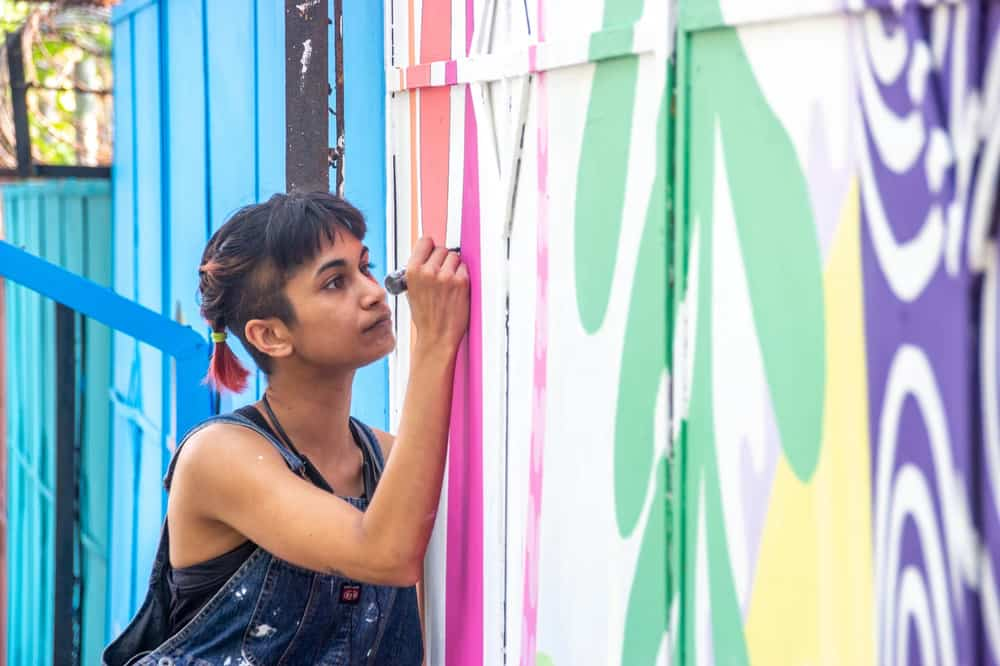

liactuallee working on a Mural, Image by Justin Nisly, 2023
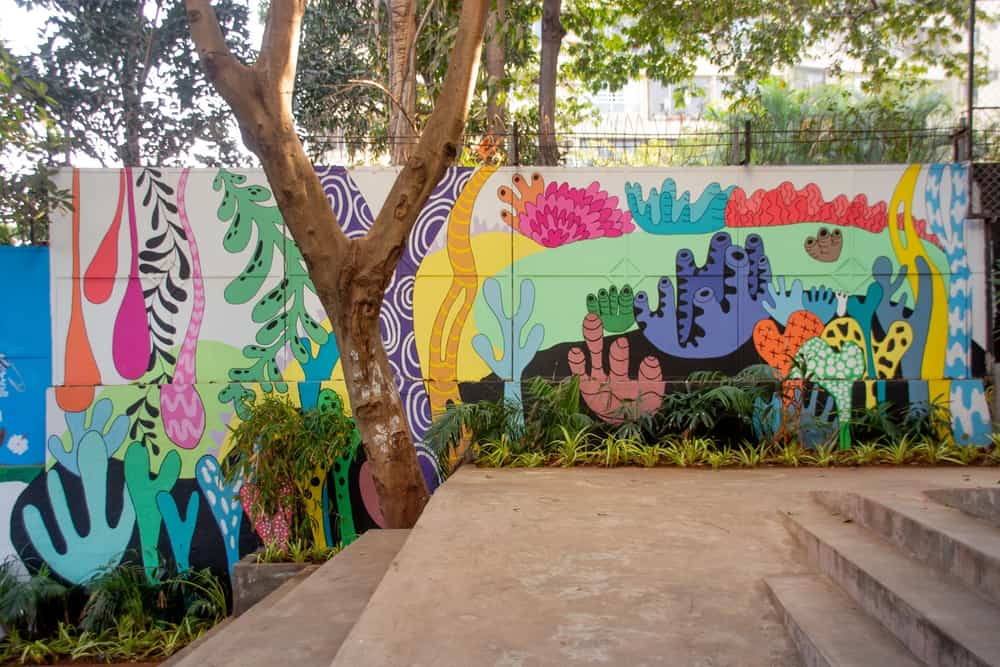

Mural by liactuallee, The Steps, Image by Justin Nisly, 2023
Davangi: Speaking about your practice you have always been interested in tapering between arts and sciences. Please tell us more about it and how you incorporate that in your body of work?
li: I have always believed that in an alternate world, I turned out to be a scientist, and I often enjoy imagining that version of myself—more rigid but still very curious. As an artist in this reality, I am interested in the nuances, in how data is collected, and how ideas come to be known as fact. It's not always a direct intentionality of incorporation; rather, what I am interested in is inevitably influencing the work itself. My fascination with flora, marine life, and diverse ecologies has affected the works I create.
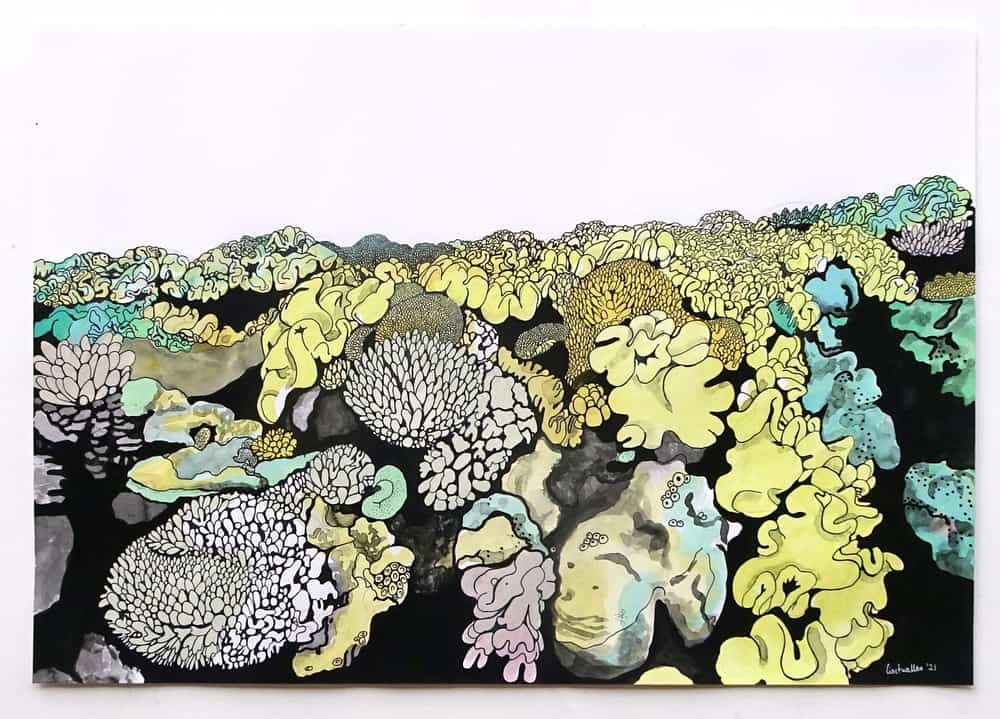

Parallel Universe No. 2, 2021
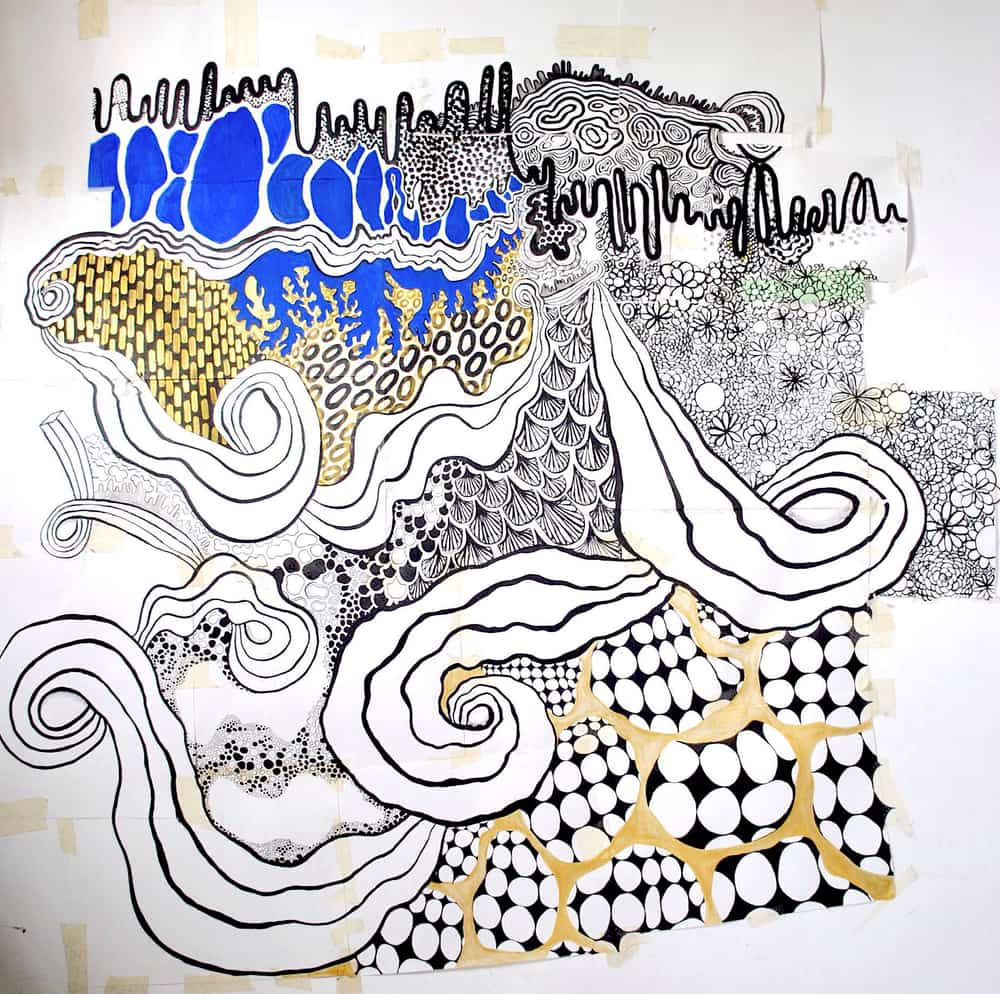

Solastalgia, 2021
Davangi: You like to call yourself a "Transient Being"? What does that mean and does being a transient significantly contribute to your art?
li: "Transient being," for me, is a way of labeling an identity that cannot be pinned down. It is the ability to stay within fluidity instead of definition, allowing oneself to simply exist before establishing boundaries on what's possible. It permits endless redefinition within my practice—I am an amorphous being before a human being, transient in gender and geography. Thus, my mind travels to unseen worlds, constructing landscapes that aren't confined by reality.
Davangi: In our previous conversation you mentioned reading Octavia Butler's Parable of the Sower was a turning point in your life and artistic practice since you were struggling with "identity". Please tell us more about how it was a turning point in your life?
li: Butler's work liberated me from the notion that only certain identities could create universes. It shifted my focus from identity-centric work to building a world centered on someone like me, proving that softer science fiction is achievable for diverse creators. It inspired me to create landscapes of hope rather than dystopian visions of the future.
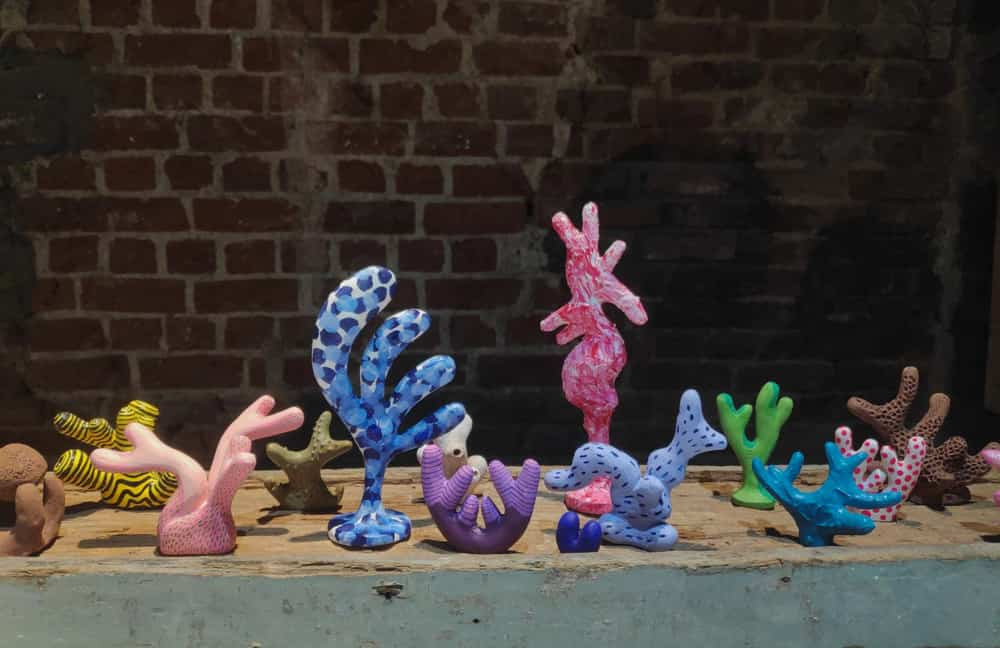

Transgressing entities, Space studio, Baroda, 2023
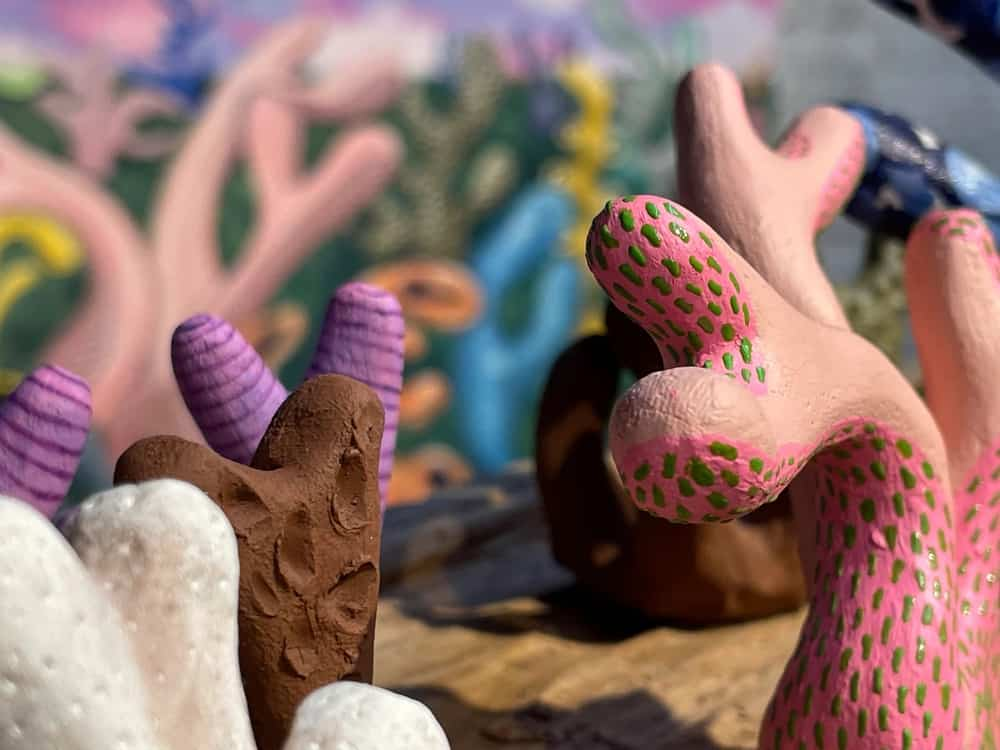

Transgressing entities, Space studio, Baroda, 2023
Davangi: Other than Octavia Butler do you find any other personality or works inspiring? If yes please tell us why you find their works inspiring? What elements of their practice of life inspired you? How does it help you to shape your artistic practices?
li: Artists providing crucial queer and feminist influences outside the traditional canon, like Louise Bourgeois, have demonstrated to me that it's possible to be an artist born in a woman's body. Bourgeois’ work taught me to embrace the grotesqueness of the body and gender, moving beyond conventional notions of beauty. Discovering Judy Chicago's profound works as a teenager, particularly "The Dinner Party" and the collaborative project "Doll House," influenced me to see art as intervention and immersive storytelling. Yayoi Kusama, whom I consider my outsider ancestor, also plays a significant role in the discipline of my studio practice. I continue to trace my own artistic lineage through South Asian artists like Priya Ravish Mehra, Renuka Rajiv, and Janine Shroff.
Davangi: Working on continuous repetitions channelised your intense "sense of itchiness". Sounds really interesting like you also mentioned that you don't like to recreate exactly what you have observed rather you recreate the sensation. Please tell us more about those sensations, your first encounter with these sensations and how you incorporate that into your practice/works?
li: Yes, as you helped me describe, I have a need for cognitive expressions of what I experience in the world. It starts with observing something or delving into random research wormholes, allowing time to ferment ideas and process sensory stimulation. Noticing what sticks in my mind leads to that sense of creative urgency that I describe as itchiness. As the sense of itchiness builds, it's like a pressure cooker; I need to release what has gotten stuck, what became entangled.
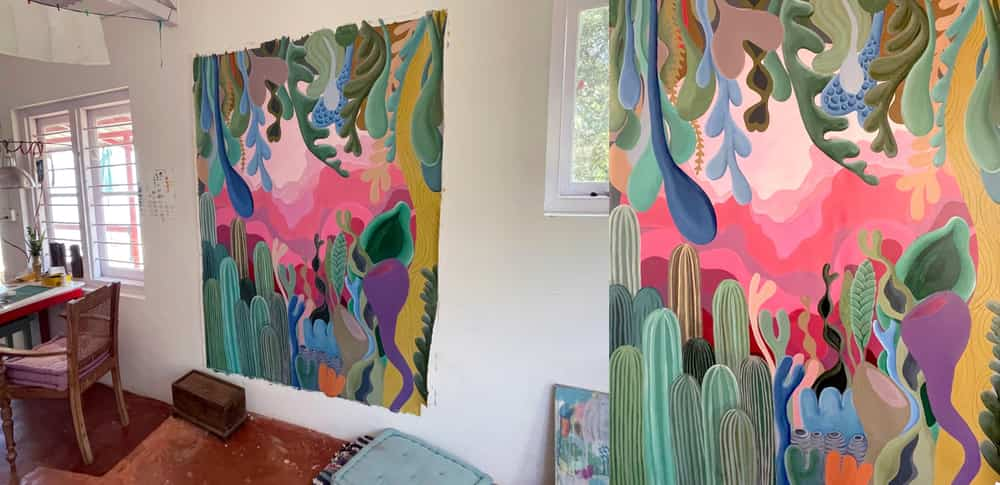

Studio view, The Nilgiri Hills
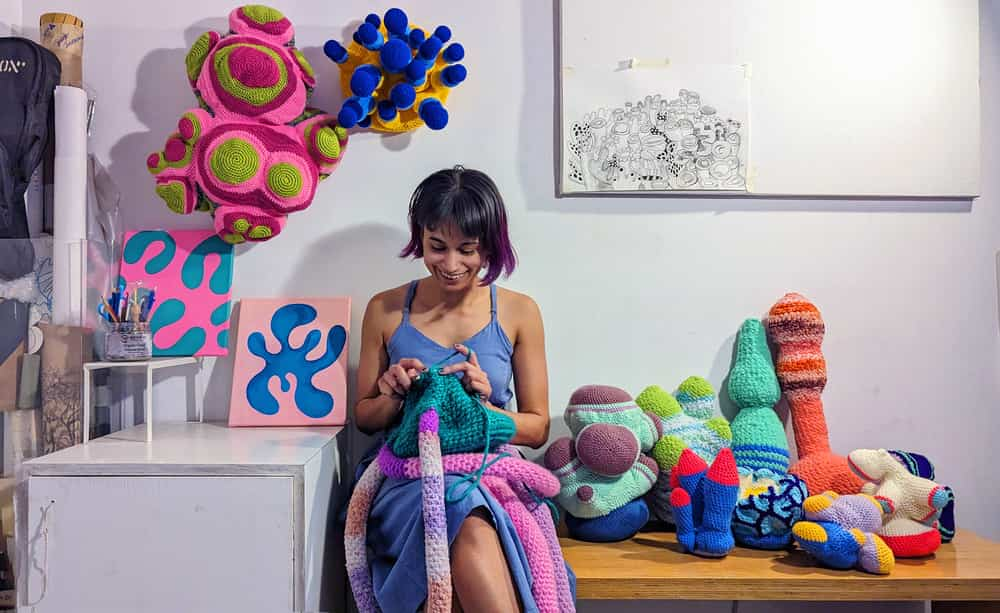

liactuallee in studio, Image by Rayyanmonkey
Davangi: The subjects in your series of works like Garden of dystopian beauties & Transgressions revolve around "finding relationships with the land" & "lack of third spaces" respectively? Could you please describe more about why you chose to work on these topics?
li: I would say that perhaps I didn't choose these issues; I was already grappling with these topics as a person, and they naturally bled into the work. During the Garden series, I was really struggling with healing my relationship to a sense of belonging and trying to mend my connection with the land I live on and how I relate to it. This struggle is reflected in the overlapping and layered motifs. Like reclaimed gardens, these drawings provide space to explore belonging through the juxtaposition and interpretation of multiple geographies. While Transgressions was a direct observation of my surroundings, focusing on the policing that occurs in public spaces and asking, "Who gets to occupy space?" What are the types of bodies and identities that are allowed to move freely within the public realm, and who is monitored? There is a fast decline in accessible third spaces globally, which really worries me. This is leading to more loneliness while minimizing the impact of shared dissent. Even as an introvert, I understand the need for shared community spaces and open dialogue.
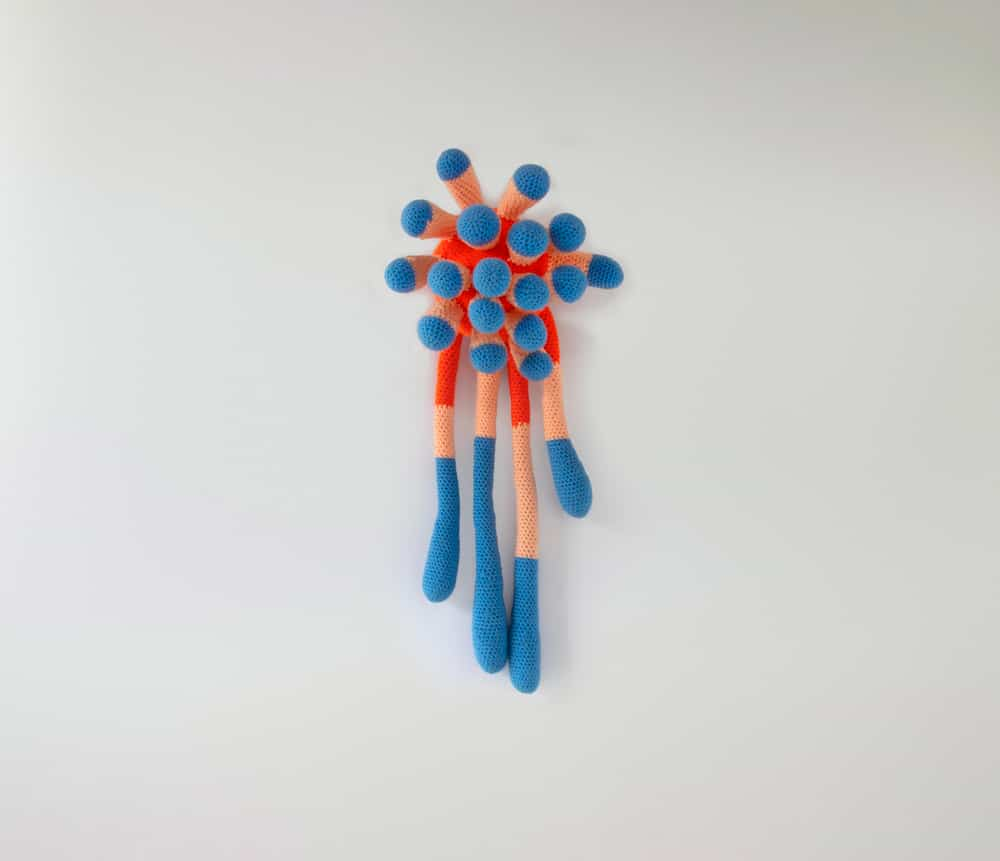

Octojellypuss (Solarhope), Image by Justin Nisly, Method Art Space, 2023
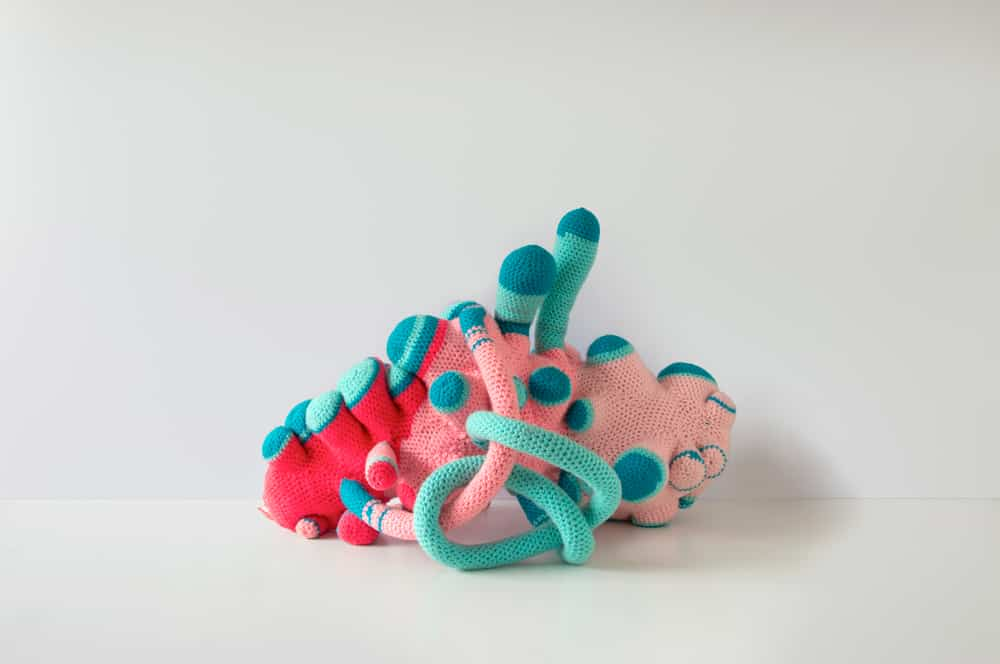

Spectrum Revolt, Image by Justin Nisly, Method Art Space, 2023
Davangi: In works like Earthborne, Earthseed and Coral Universe and others showcase forms resembling deep sea flora and fauna. What was the idea behind these works? Were these elements intentional? Please tell us more.
li: As the deep-sea worlds of coral are not accessible to me, I find myself fixating on the unknown. There is an entire world underwater that we know so little about, and that sense of mystery fascinates me. Moreover, the peculiar and queer aspects of many beings, such as coral reefs, nudibranchs, brittle stars, and more, intensify my interest in their aesthetic sensuality and strangeness. An extension of my Garden series, in Earthborne and Earthseed, I intentionally amalgamate the deep sea with my lived geographies, envisioning landscapes that merge these worlds into fantastical marvels of lush ecologies. I still find these two works to be some of my favorites; I love to imagine walking into the drawings and being encased in the soft ecologies.
Davangi: Would you like to tell us about any future projects? Will you be experimenting with different mediums?
Click here to view li's Online Viewing Room and learn more about their practice.
li: In the ongoing evolution of my works, I've started transitioning to fiber-based mediums, focusing on sculptural crochet and exploring recycled and sustainable materials. This shift allows my drawings to move from two-dimensional to the tactile realm, bringing the worlds I've built into reality. I'm dedicated to the prospect of creating larger immersive spaces and engaging in public art interventions.


